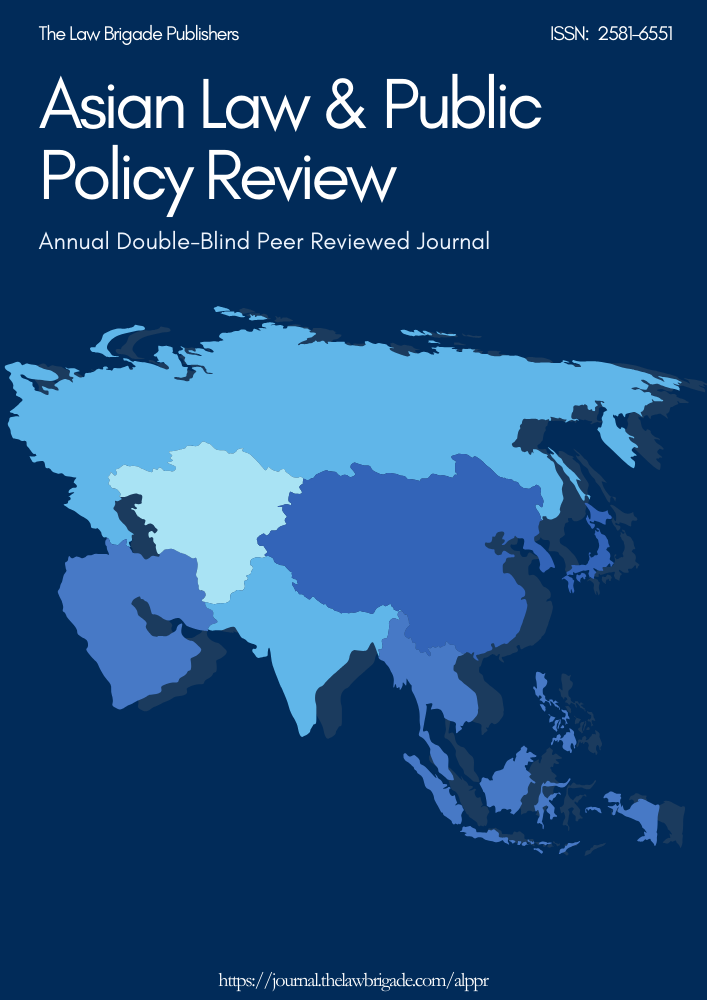A COMPARATIVE ANALYSIS OF CRUCIAL FEATURES OF THE CONSTITUTIONS OF NEPAL AND INDIA
Keywords:
Constitution, Parliament, RightsAbstract
When comparing Nepal's 2015 Constitution to India's 1950 Constitution, the study considers critical issues such as citizenship, inclusion, fundamental rights, and judicial independence. Both constitutions are concerned with one another. To a socialist society founded on democratic principles and goals, as well as human competitiveness. Civil liberties, fundamental rights, and federalism are all components of a democratic multiparty system of governance. republic, secularism, adult voting, regular elections, unrestricted press freedom, and an independent press. The rule of law is predicated on independent, unbiased, and competent judges who are free to do as they like.
Downloads
References
i Strong, C.F. (1973). Modern Political Constitutions, (8th ED), London: Sidgwick and Jackson Ltd.
ii Grimm, D. (2017). Constitutionalism: Past, Present and Future. UK: Oxford University Press.
iii Meena, R.K and Bhattacharjee, D. (2016). Constitutional Development in Nepal, in Promod Jaiswal (Ed.)
Constitutional Development in Nepal: Evolution, Development and Debates, New Delhi: GB Books.
iv Dahal, G.D. (2017). Constitution of Nepal and Political Development: Adoption and Challenges of
Implication. Janapriya Journal of Interdisciplinary Studies, 17, 148- 159.
v Davis, D., Cheadle, H. and Haysom, N. (1997). Fundamental Rights in the Constitution: Commentary and
Cases. Kenwyn: Juta and Co, Ltd
vi Tripathi, H.B. (2002). Fundamental Rights and Judicial Review in Nepal. Kathmandu: Pairavi Prakashan
vii Naidu, S.K (2016). Constitution building in Nepal. Delhi: Gaurav Book Centre Pvt.Ltd.
viii Tripathi, H.B. (2002). Fundamental Rights and Judicial Review in Nepal. Kathmandu: Pairavi Prakashan
ix Judiciary in Nepal, http://www.supremecourt.gov.np/main.php?d=general&f=preliminaries
x The 1990 Constitution Making in Nepal and its Implementation (Part 1)
http://www.constitutionnet.org/news/1990-constitution-making-nepal-and-its-implementation-part-1
xi Naidu, S.K (2016). Constitution building in Nepal. Delhi: Gaurav Book Centre Pvt.Ltd.
xii https://constitutionnet.org/news/1990-constitution-making-nepal-and-its-implementation-part-1, The 1990
Constitution Making in Nepal and its Implementation (Part 1), By Professor Tri Ratna Manandhar, 15 October
2014
xiiiKochar, G. and Jaiswal,P. (2016). Unique Asian Triangle: India, China and Nepal. New Delhi: M G.B. Books.
xiv Chaudhary, S., Khosla, M. and Meheta,P.B. (2016).The oxford Handbook of the Indian Constitution. New
Delhi: Oxford University Press.
xv Bhandari, S. (2016).Constitutional design and implementation dynamics: Federation and inclusive national
building in Nepal. Kathmandu: Himal innovative development and research
xvi Kapur, A.C. and Mishra, K.K. (2012).Select Constitutions. New Delhi: S. Chand and company ltd.
xvii Chakrabarty, B.(2017). Indian Constitution.New Delhi: Sage Publication.
xviii Mellalli, P.(2015). Constitution of India, Professional Ethics and Human Rights.New
Delhi: Sage Publication.
xix Ibid: P.23
xx Chaudhary, S., Khosla, M. and Meheta,P.B. (2016).The oxford Handbook of the Indian Constitution. New
Delhi: Oxford University Press.
xxi Mellalli, P.(2015). Constitution of India, Professional Ethics and Human Rights.New Delhi: Sage
Publication.
Downloads
Published
Issue
Section
License

This work is licensed under a Creative Commons Attribution-NonCommercial-ShareAlike 4.0 International License.
License Terms
Ownership and Licensing:
Authors of research papers submitted to any journal published by The Law Brigade Publishers retain the copyright of their work while granting the journal specific rights. Authors maintain ownership of the copyright and grant the journal the right of first publication. Simultaneously, authors agree to license their research papers under the Creative Commons Attribution-ShareAlike 4.0 International (CC BY-SA 4.0) License.
License Permissions:
Under the CC BY-SA 4.0 License, others are permitted to share and adapt the work, even for commercial purposes, provided that appropriate attribution is given to the authors, and acknowledgment is made of the initial publication by The Law Brigade Publishers. This license encourages the broad dissemination and reuse of research papers while ensuring that the original work is properly credited.
Additional Distribution Arrangements:
Authors are free to enter into separate, non-exclusive contractual arrangements for distributing the published version of the work (e.g., posting it to institutional repositories or publishing it in books), provided that the original publication by The Law Brigade Publishers is acknowledged.
Online Posting:
Authors are encouraged to share their work online (e.g., in institutional repositories or on personal websites) both prior to submission and after publication. This practice can facilitate productive exchanges and increase the visibility and citation of the work.
Responsibility and Liability:
Authors are responsible for ensuring that their submitted research papers do not infringe on the copyright, privacy, or other rights of third parties. The Law Brigade Publishers disclaims any liability for any copyright infringement or violation of third-party rights within the submitted research papers.


